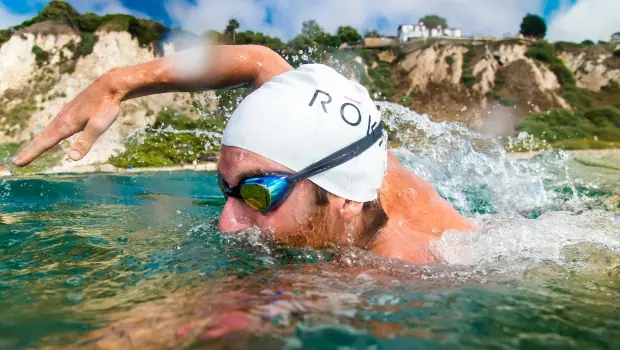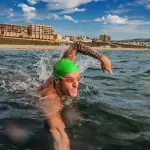
There is something innately positive and natural about swimming in the open water. The limitless sensation of swimming without the confines of walls and lane lines is a big draw for many people.
Swimming in the open water requires patience, determination, confidence and a bit of humor. Unlike the pool, open water conditions can be quite variable, with elements such as wind, surface chop, big waves and swell to be considered. One, or a combination of these factors, can create intimidating swimming conditions unless you're prepared before you get your feet wet.
Triathlon Events Near You
The Biggest Return on Your Investment
Sighting is the most important skill to increase your open water swimming IQ. It may seem obvious that a swimmer must look forward or "sight" to maintain a straight course, but it's likely the most common and costly problem seen in triathletes and open water swimmers alike.
More: Must-Have Swim Training Gear for Triathletes
The best swimmers integrate sighting into the mechanics of their stroke cycle. The natural tempo and fluidity of your stroke should not be interrupted or compromised while you sight. Many swimmers halt their stroke completely to lift their head to look around, and restart their stroke each time. This improper technique causes a huge break in momentum and a correlating drop in body position.
Instead, imagine extending your head forward, similar to a turtle, to maintain a low profile in the water. The higher you lift your head out of the water, the lower your hips and legs will sink--causing a lot of drag and loss of speed. Depending on water conditions, your goggles (and possibly nose) should clear the water when sighting, just enough to get a clear picture of what's ahead of you.
When Is the Right Time?
Tempo is everything in open water swimming. Maintaining a consistent, rhythmic stroke rate allows the swimmer to overcome the difficulty of the dynamic, moving water without losing speed or momentum.
More: Fun Swim Caps to Spice Up Your Swim
Integrating sighting mechanics into your stroke cycle is imperative to managing the integrity of your stroke in open water. To monitor this, repeat "inhale, exhale, inhale, sight" in your head as you take each stroke; sighting is synonymous with the exhale. As you extend the head forward to sight you should be exhaling, even if your mouth clears the water. Your breathing pattern is your tempo in swimming, and consistent breathing will translate directly to aerobic efficiency.



